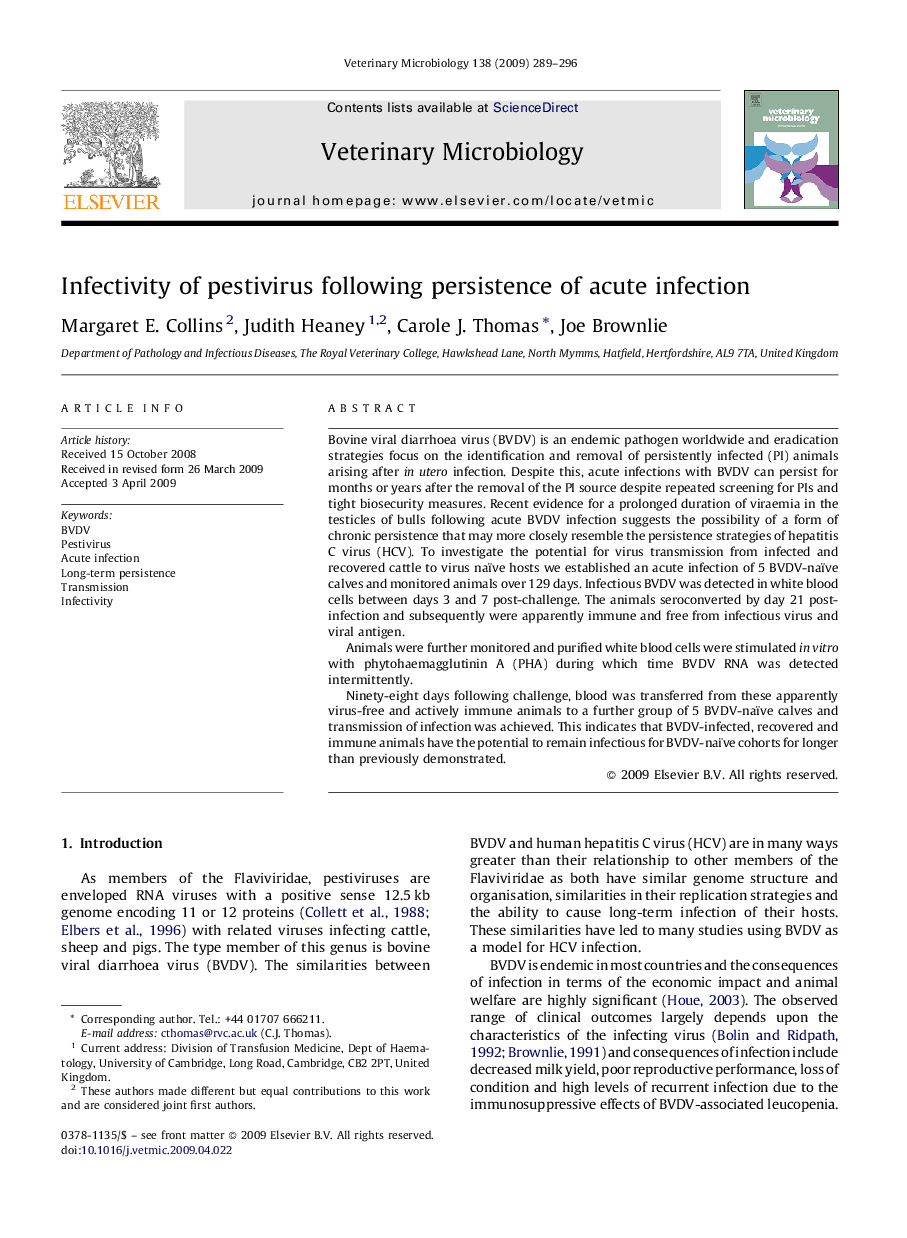| Article ID | Journal | Published Year | Pages | File Type |
|---|---|---|---|---|
| 2468390 | Veterinary Microbiology | 2009 | 8 Pages |
Bovine viral diarrhoea virus (BVDV) is an endemic pathogen worldwide and eradication strategies focus on the identification and removal of persistently infected (PI) animals arising after in utero infection. Despite this, acute infections with BVDV can persist for months or years after the removal of the PI source despite repeated screening for PIs and tight biosecurity measures. Recent evidence for a prolonged duration of viraemia in the testicles of bulls following acute BVDV infection suggests the possibility of a form of chronic persistence that may more closely resemble the persistence strategies of hepatitis C virus (HCV). To investigate the potential for virus transmission from infected and recovered cattle to virus naïve hosts we established an acute infection of 5 BVDV-naïve calves and monitored animals over 129 days. Infectious BVDV was detected in white blood cells between days 3 and 7 post-challenge. The animals seroconverted by day 21 post-infection and subsequently were apparently immune and free from infectious virus and viral antigen.Animals were further monitored and purified white blood cells were stimulated in vitro with phytohaemagglutinin A (PHA) during which time BVDV RNA was detected intermittently.Ninety-eight days following challenge, blood was transferred from these apparently virus-free and actively immune animals to a further group of 5 BVDV-naïve calves and transmission of infection was achieved. This indicates that BVDV-infected, recovered and immune animals have the potential to remain infectious for BVDV-naïve cohorts for longer than previously demonstrated.
